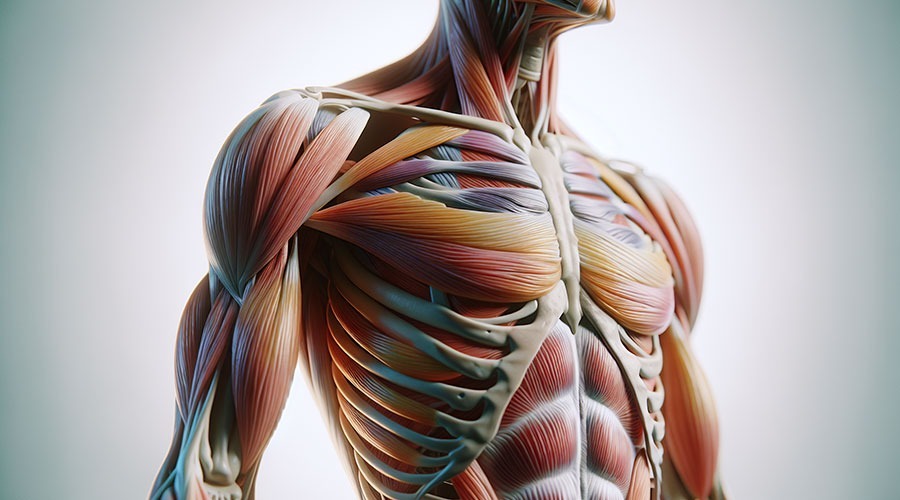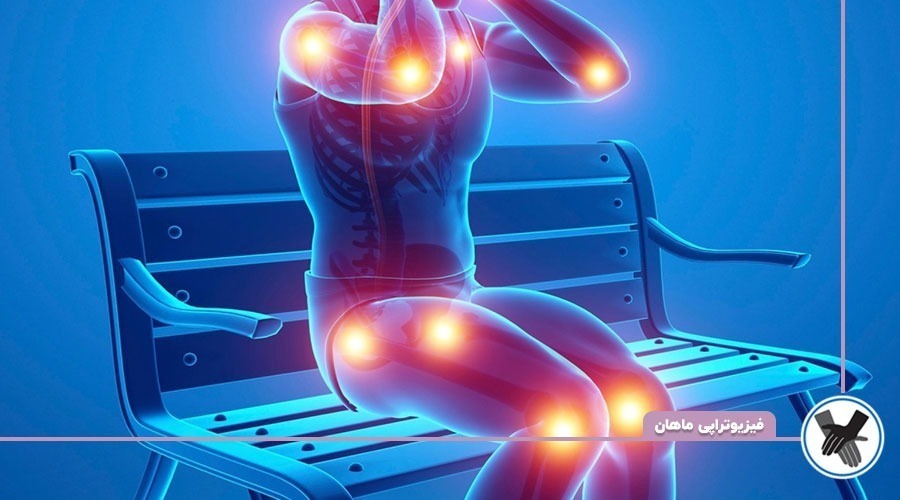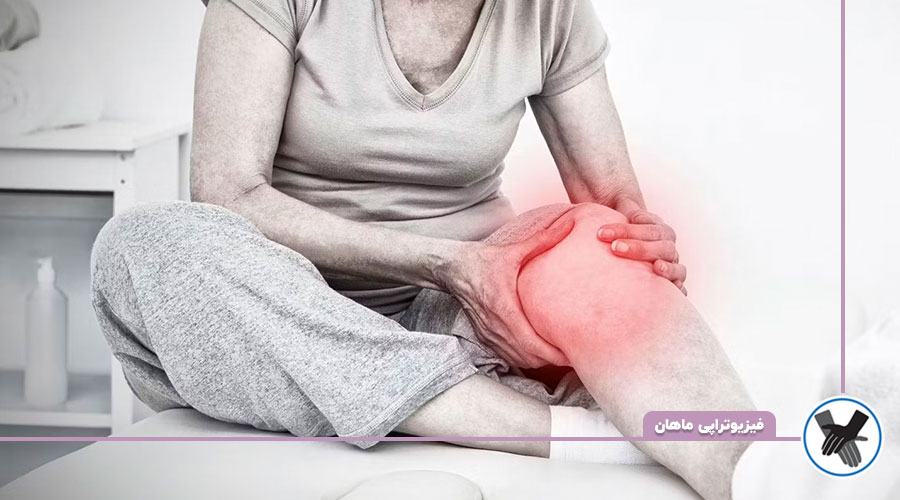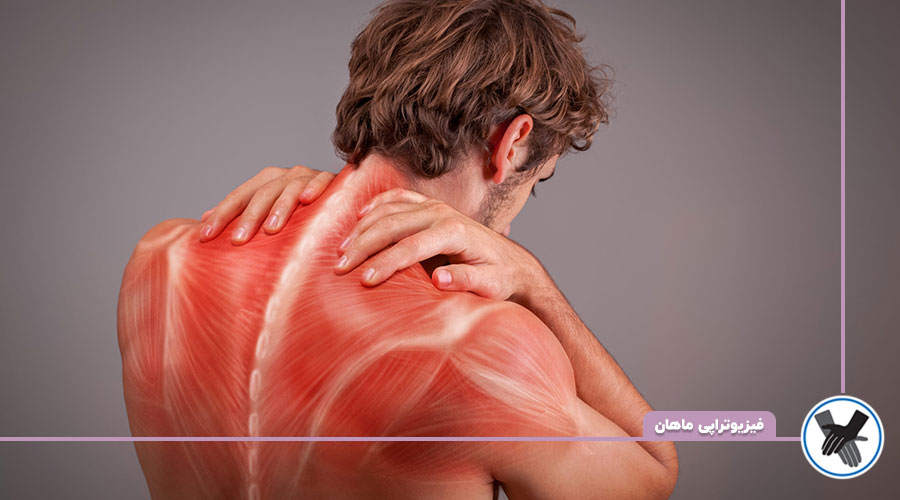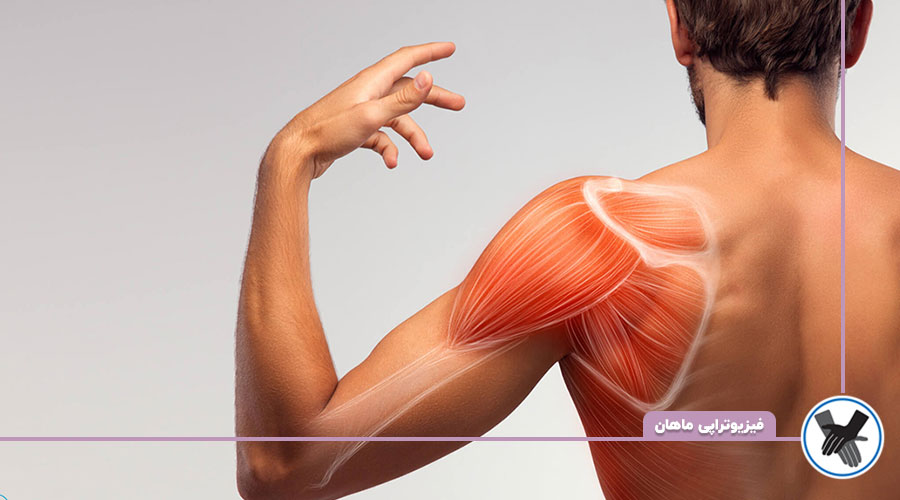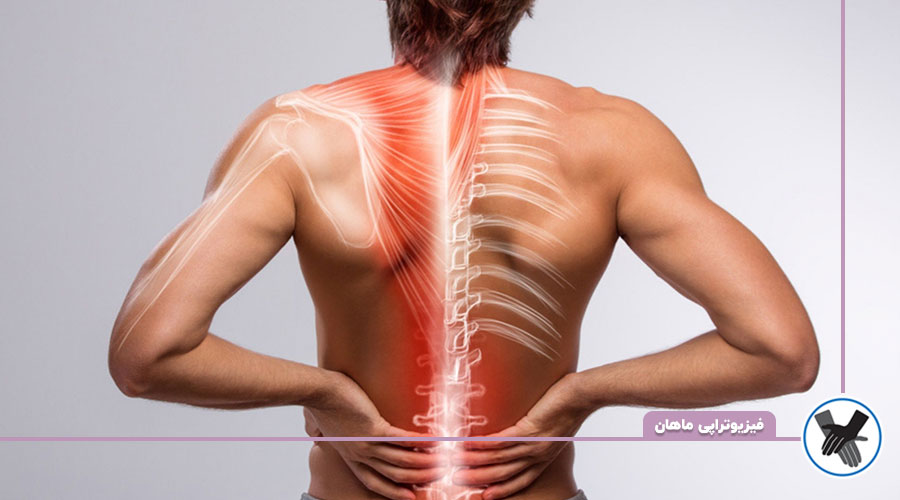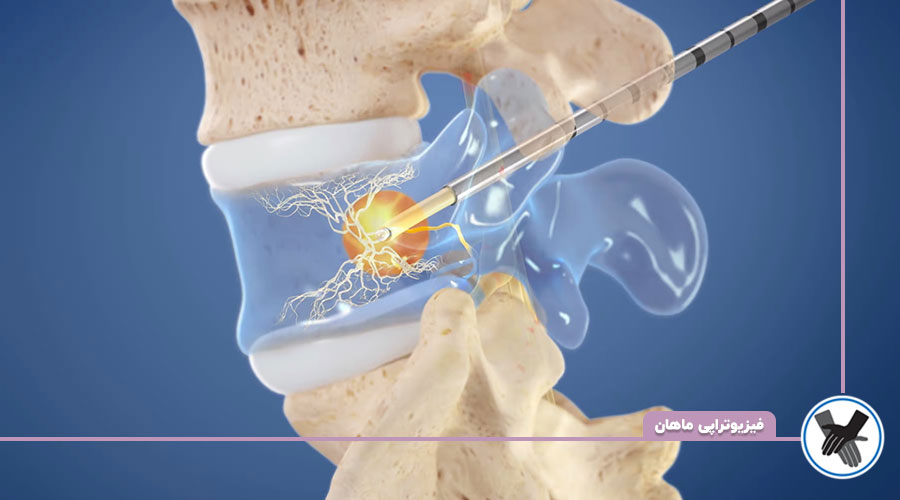Physiotherapy services are extensive in relieving pain and improving complications, as well as restoring the body’s natural movement conditions. We can rely on effective physiotherapy techniques for all movement, bone, muscle and even nerve problems. A large part of these techniques are related to the treatment services of joints, muscles and nerves.
Joint treatment services and along with it muscle physiotherapy have a specific trend in physiotherapy techniques. Although these two parts of the body are separate from each other; But they are completely dependent on each other. In the meantime, along with any type of joint or muscle problem, we are often faced with problems such as neuroinflammation, which ends in chronic and annoying pains. Nerve treatment services are also based on modern physiotherapy methods to relieve pain and finally remove their inflammation. In Mahan Physiotherapy Group, you have access to all modern and effective techniques of joint, muscle and nerve physiotherapy.
Physiotherapy services for the treatment of joints
Any kind of pain, stiffness or inflammation of the joints is the basis of movement problems and bone abnormalities, which definitely make our daily life difficult. In general, we know all joint complications as arthritis, and the treatment of these complications is possible through joint physiotherapy techniques. But what are these services in the implementation of physiotherapy techniques?
Examination and examination of the cause of joint pain
The first step to treat joints is to examine and check the severity of the injury or its type. Although the patient needs to be examined under the supervision of an orthopedic doctor and the dimensions of his joint damage are checked; But in order to benefit from joint physiotherapy techniques, we need to investigate the full details of the cause of joint stiffness, erosion or tearing. Joint problems are usually rooted in the following factors:
- age increasing
- heavy weight
- Genetic factors
- Joint injuries such as sports injuries
- Attending certain jobs or sports
By examining these causes, the physiotherapist can examine the sufficient background of the joint damage and plan the effective treatment path. At the same time, joint treatment services through physiotherapy techniques can include the implementation of active or passive methods. The physiotherapist’s strategy in putting these methods together is essential for effective improvement and complete treatment of joint problems.
Joint physiotherapy techniques
Joint problems are usually faced with severe pain and reduced range of motion and dryness of the body and limbs. In such a way that patients are unable to do daily tasks and normal life. Joint treatment services with the implementation of physiotherapy methods include the development of exercise and rehabilitation programs to help patients relieve pain, improve flexibility and restore joint range of motion, reduce stiffness and strengthen the muscles around the joints.
Physiotherapy of joints is performed along with sports programs along with passive measures such as heat or ice therapy and even electrical stimulation. At the same time, a large part of therapeutic activities includes manual therapy techniques such as massaging the injured joint area. To benefit from all the standard joint physiotherapy methods, you can use the specialized services of Mahan Physiotherapy Group. These techniques in joint treatment services are as follows:
Therapeutic Exercies:
The most important actions of joint treatment services include the implementation of various sports methods. Physiotherapists will adjust an exercise program to rehabilitate the range of motion of the joint according to the type of injured joint as well as the severity of the injury and taking into account the patient’s condition and age. This program includes all kinds of stretching movements, strength training, endurance cardiovascular training, etc. Of course, the order of execution of the movements, the duration of their execution and the manner of execution must be planned under the supervision of the physiotherapist.
Manual treatments:
Passive physical therapy methods are an important part of joint treatment services, and the best and most effective of them are manual treatments that are performed in various forms of massage therapy. Massage therapy includes several techniques that stimulate joint, soft tissue stimulation, as well as joint and muscle stretching to improve function and reduce pain in damaged joints. Of course, how to perform massages is different according to the type of joint and the severity of the injury of each joint. An important part of manual therapy involves moving the joints through soft tissue stimulation and stretching performed by the physiotherapist with the aim of increasing flexibility.
Heat and cold therapy:
Joint stimulation techniques through heat or cold are effective to reduce inflammation and finally relieve the pain of damaged joints. Heat therapy works to increase blood flow in the joints and relax tight muscles, which helps reduce pain. At the same time, cold therapy is effective for reducing inflammation and numbing the affected joint and reducing pain and swelling. Both heat and cold therapy methods are performed using compresses and are among the preliminary and passive activities of joint physiotherapy. Physiotherapists generally use heat or cold therapy to relieve pain and reduce inflammation in order to prepare the patient to accept practical techniques such as massage or manual therapy and even exercise.
Hydrotherapy:
Hydrotherapy is a part of the joint physiotherapy process, which is performed under the supervision of a physiotherapist but indirectly. Water therapy refers to performing sports movements and manual treatments in water, for example, walking in the pool or stimulating muscles through hot water, etc. In any case, exposure to water and experiencing the state of being immersed in it is effective in reducing the pressure on the joints and can play a role in relieving joint pain and preparing the patient to start the rehabilitation period.
Electrical stimulations:
Stimulation by sending electric waves is an effective joint physiotherapy technique that plays a role in managing pain and preparing the patient to perform sports movements in the rehabilitation period. Controlled electrical currents can contribute to pain reduction, stiffness reduction and resolution of joint inflammation if properly targeted to the affected area. For this, they use the TENS electrical stimulation device.
Ultrasound (stimulation of sound waves):
Ultrasound is one of the effective and non-invasive treatments to relieve joint pain and relieve its inflammation due to serious injuries. In this technique, physiotherapists use the emission of high frequency sound waves in the tissues around the damaged joints to reduce pain and inflammation.
When do you need joint physiotherapy?
Timely action is the most important determining factor for the treatment of damaged joints. As a rule, any pain or cramping and movement limitation in the joints does not require serious physical therapy measures. But if you see the following symptoms, be sure to visit a specialist doctor and check and treat joints through physiotherapy:
- Joint pains that increase during or after movement.
- Stiffness of the joints in such a way that it is difficult and impossible to move the body parts.
- Decreased joint range of motion
- Frequent, loud and abnormal joint sounds while moving the limbs
- Finding bone masses in the joint area
Physiotherapy services for muscle treatment
Muscles are the determining factor of the body’s ability to move and play a role in all our daily activities. Basically, any kind of muscle damage is effective in reducing the range of motion and even serious problems. Meanwhile, many muscle problems and injuries are treated through effective physiotherapy techniques.
Muscles with a large range of motion are present in organs such as legs, hands, arms, back, etc., which for some reason face problems such as dryness or spasms or cramping. These problems can reduce the range of motion of the limbs and even cause severe pain. We can solve almost all these problems through muscle treatment services and relying on physiotherapy methods.
Examining the causes of muscle problems
Physiotherapy techniques of muscles play a prominent role in relieving pain and improving complications such as dryness, spasm or muscle cramps, provided that in the first step we have correctly investigated the cause of muscle problems. Examining and examining the roots of problems is a part of muscle treatment services, which begins with a careful examination of the damaged tissue under the supervision of a physiotherapist. Various reasons cause muscle spasms or cramps. Such as:
- Physical pressures and performing wrong movements under high pressure
- dehydration
- A lot of movement and beyond the strength of the muscles
- Protective reactions of the body
- Lack of calcium and magnesium in the blood
- Nervous stimulation
- Decreased electrolytes
Muscle physiotherapy techniques are different for each of these factors. Sometimes, by examining the causes, the physiotherapist applies several treatment techniques at the same time and during a certain program. In the way that it is necessary to go through the treatment process from reducing inflammation, relieving pain to strengthening muscles and rehabilitation and reaching the ideal form. To benefit from all muscle treatment services, you can benefit from Mahan Physiotherapy Group. These muscle physiotherapy services and techniques are as follows:
Massage therapy:
Massage therapy is in the category of passive manual techniques, which is always one of the best and most effective methods to improve and reduce muscle tension. Of course, there are various massage therapy methods to relieve spasms or muscle cramps. At the same time, any type of massage is not useful for any type of muscle problem, and improper execution may even aggravate the problem. It is necessary to choose the type of massage, the intensity of the massage and the duration of the massage to be done with a careful examination of the injured muscle and under the supervision of a physiotherapist.
Heat therapy:
Heat therapy is done in various ways to improve spasm or muscle cramps and is generally one of the best and most effective physiotherapy techniques for treating muscle problems. Of course, we cannot use heat therapy techniques for every type of muscle damage. Usually, this method is recommended to reduce pain and treat muscle injuries that have become chronic and do not resolve in the long term. At the same time, the type of heat therapy and its intensity should be done under the supervision of a physiotherapist.
Sports and movement activities:
Moving the limbs is a big part of muscle treatment services. Some of these techniques are performed manually with the help of a physiotherapist, and the more advanced part is performed by independent muscle exercises by the patient himself without help. At the same time, it is recommended to perform sports movements with various goals, such as pain relief, movement recovery, muscle spasm or cramp removal, and of course muscle strengthening. Of course, it is necessary to design the type of movement and the number of movements to be planned at the discretion of the physiotherapist. Sometimes physical therapists have a strategy for muscle treatment that will include pain relief exercises, movement recovery exercises, and finally strengthening exercises.
Muscle electrotherapy:
Electrotherapy refers to all methods of electrical stimulation in the damaged area. This method is used in many physiotherapy services and for many complications, part of which will include muscle electrotherapy. Electrotherapy is usually used to treat dry muscles. Because the release of electric waves has a positive effect on relieving dryness and opening all muscles.
Acupuncture:
Acupuncture is a very old treatment method that has 3000 years of roots. This treatment method has its roots in Chinese culture and its effectiveness has been proven time and again to treat many complications. Acupuncture is entirely based on nerve stimulation to treat problems. In this case, acupuncture is also used to stimulate the nerve of the muscle and relieve its dryness and stiffness. Of course, this method is completely specialized and done with great delicacy, and it is necessary to perform it under the supervision of a knowledgeable and trained physiotherapist.
Muscle treatment services are the application of various treatment methods aimed at increasing range of motion, increasing muscle length, and of course, pain management. Physiotherapists predict a detailed plan of applying physiotherapy methods for each muscle problem, which must be done in detail and completely accurately. You can use Mahan Physiotherapy team to benefit from all muscle treatment services.
Physiotherapy services for the treatment of nerves
Neurological physiotherapy or neurological physiotherapy is one of the key parts of physiotherapy services, which works to treat neurological diseases through sports techniques or mechanical equipment and electric currents, and even manual movements and other physical stimuli. In this method, we are going to treat patients with movement disorders that have neurological roots.
Nerve therapy services include performing physical therapy techniques that help stimulate nerves to resolve movement problems. In fact, nerve physiotherapy is used when we are dealing with healthy body tissues and organs; But neurological problems have caused movement disorders. To benefit from all nerve treatment services based on physiotherapy techniques, you can benefit from Mahan Group. These physiotherapy methods are as follows.
Physiotherapy of nerves to treat and improve diseases
By using nerve physiotherapy techniques (neurological physiotherapy) we are able to have a positive effect on all diseases with nerve roots and even treat them. These neurological complications are as follows:
Physiotherapy of Parkinson’s nerves:
Parkinson’s is a disease with unknown causes that severely affects the nerves and leads to abnormal tremors and eventually muscle spasms. This complication usually occurs in elderly people and has no definitive treatment. But by benefiting from nerve physiotherapy techniques, we can reduce the progress of the disease and have a positive effect on strengthening the nerves and muscles and improving the lives of patients.
Physiotherapy of MS nerves:
MS is another neurological disease with unknown origins that affects almost all body organs and their nerves. MS contributes to body dryness, body imbalance, inability to control body muscles and even vision problems. At the same time, although there is no definitive treatment for this disease; But by relying on neurological physiotherapy, we can significantly improve the conditions of MS patients.
Physiotherapy of Bell’s Palsy nerves:
This complication occurs completely suddenly and during it part of the facial muscles are completely paralyzed. Of course, there is no definitive treatment for Bell’s palsy; But we can rely on nerve treatment services in physiotherapy techniques to a significant extent to recover the muscles and movement power of the facial parts.
stroke:
Stroke is one of the common complications that is always associated with severe motor and muscle problems. Because an important part of the nerves of the body organs are at risk. From the methods of physical therapy of nerves, we can take significant measures to restore the movement of people who have suffered a stroke.
When should we do nerve physiotherapy?
In general, to treat or improve the symptoms of any movement problem that has nerve roots, you should use nerve physiotherapy. In a general view, this type of physiotherapy is recommended along neurological disorders. These disorders are as follows:
- Any type of severe muscle weakness
- Any kind of inability to control the limbs or inability to balance the body
- Severe and involuntary tremors of muscles and organs
- Inability in body functions
- Severe and consecutive muscle spasms in uncontrolled conditions
- Not overcoming environmental authority
- Inability to coordinate body parts
What are the nerve physiotherapy techniques?
Physiotherapy technology of nerves with the aim of neurological rehabilitation is a modern and growing part of medical sciences. All techniques implemented in these methods are non-invasive and play an effective role in nerve stimulation. Training to use a treadmill, recovery of movement on a treadmill, BWSTT (body weight support), implementation of robotic techniques of the upper and lower limbs of the body are part of these measures.
To benefit from all nerve treatment services and targeted and effective planning in nerve physiotherapy, you can use the services of Mahan Group. At Mahan Group, you have access to all the latest equipment and techniques in the world of physiotherapy science, and the treatment process will be performed under the supervision of the best experienced physiotherapist. In this center, we are by your side from examination, pain relief, movement recovery, and strengthening of damaged tissues so that you can easily enjoy normal living conditions.

